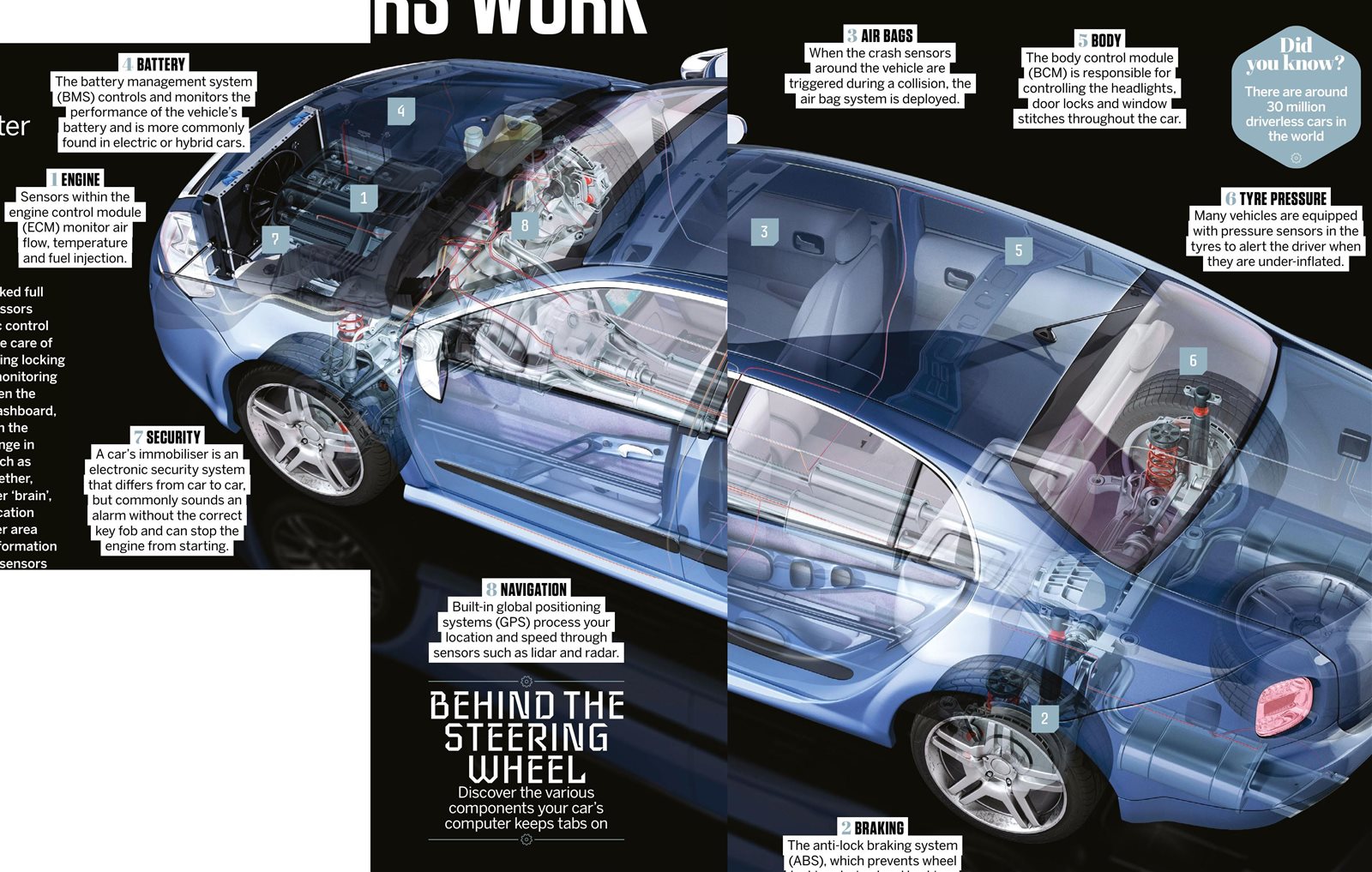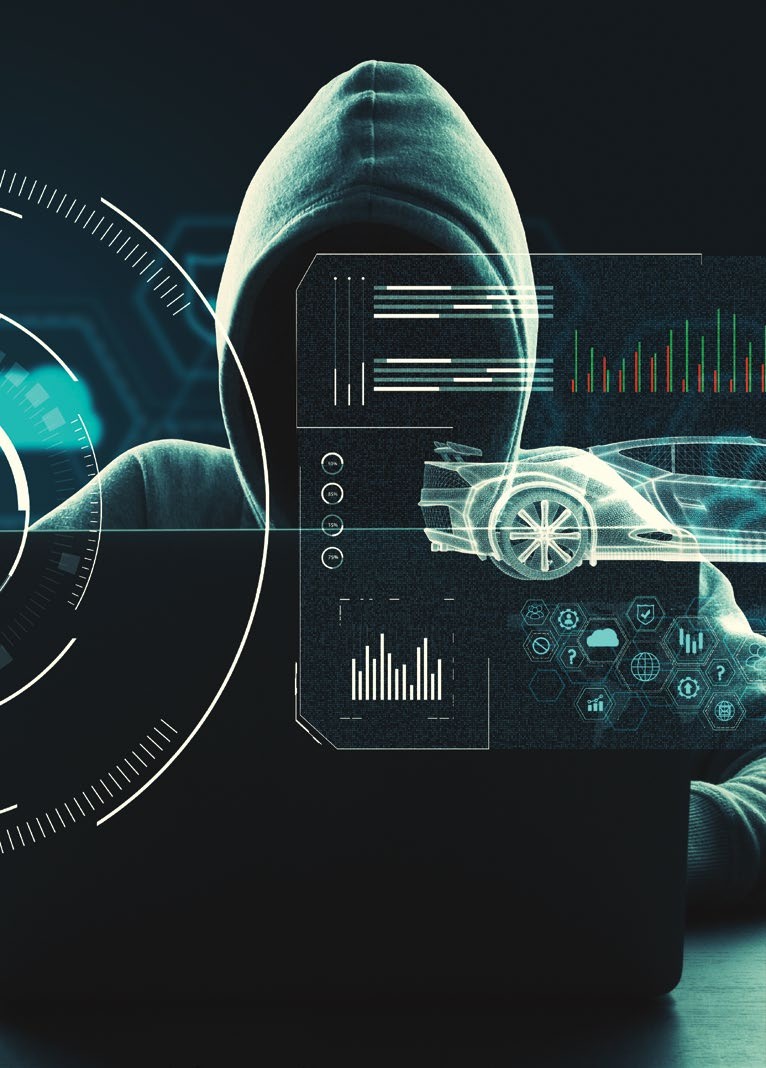Modern-day cars are packed full of sensors, microprocessors and different electronic control units (ECUs), which take care of different aspects of the car, including locking systems, automatic braking and monitoring engine efficiency. If you’ve ever seen the check-engine light flash on your dashboard, that’s the result of small sensors in the engine’s ECU alerting you to a change in one of the qualities it monitors, such as temperature or oxygen levels. Together, the ECUs create the car’s computer ‘brain’, all connected through a communication ‘nervous system’ called a controller area network (CAN). The CAN relays information gathered from up to 100 different sensors around the vehicle to each ECU so that the vehicle works in harmony.
One of the first ECUs emerged in the 1960s from German car manufacturer Volkswagen when it released the Type 3, the first car to host a computer-controlled electronic fuel injection (EFI). The EFI controlled the mixture of air and fuel in the car’s injection system to prove fuel consumption efficiency and improve the quality of its emissions. Over the decades, more and more ECUs have been added into the world’s cars to transform the way we drive. For example, what was once a direct connection between the foot pedal of
the accelerator and an internal combustion engine was replaced in 1998 to include an electrical go-between. In the Volvo 280, this severed the link between the pedal and the engine and bridged the connection with a computer. When the pedal is pushed, it generates an electrical signal to the computer that opens the throttle of the car’s engine. Within the last 20 years, manufacturers have completely transformed what a car is capable of. From built-in AI assistants to driverless vehicles, the new age of all-electric cars is reliant on onboard computers to function.

CAR HACKING
Like your smartphone or laptop, car computers are susceptible to outside interference. From cracking key fobs to hacking into car servers, malicious minds have found various ways to break into cars without breaking any glass. Most cars have built-in digital defences that make hacking a rarity, but sometimes vulnerabilities in the car’s system make it easier for hackers to find their way in. For example, in 2024, researchers discovered a vulnerability in the website of the South Korean car manufacturer Kia. The technical bug allowed potential hackers to remotely track vehicles with their number plates. Researchers created an experimental app that could track the coordinates of Kia vehicles through their onboard computers and even control different functions in the cars, locking the doors and starting the engines. After reporting their findings to Kia, the bug was resolved.

Even cars aren’t safe from the threat of hackers